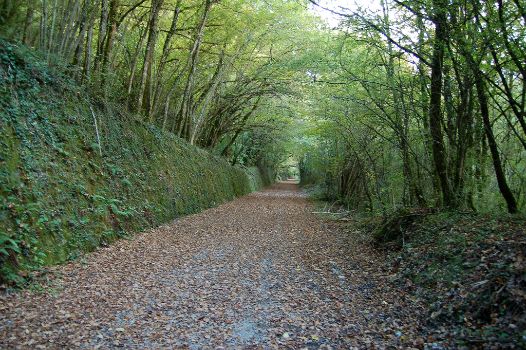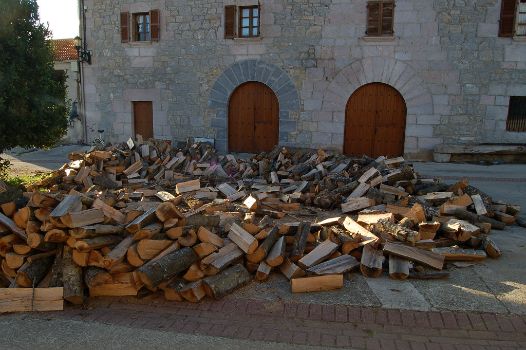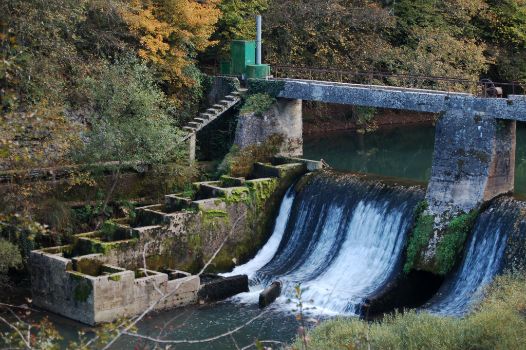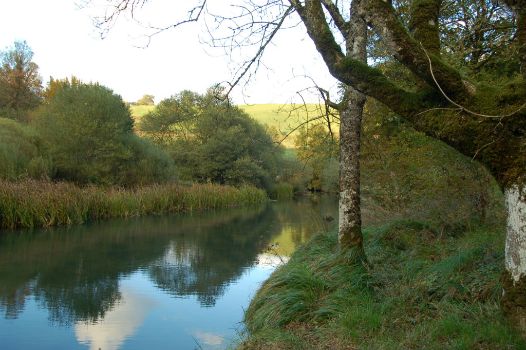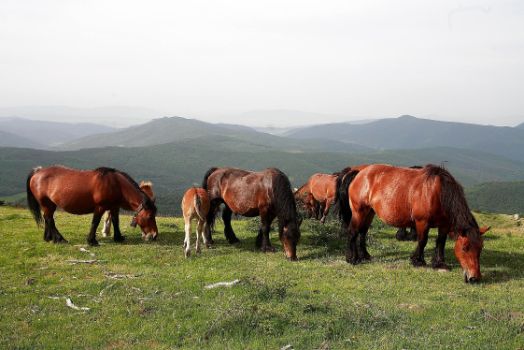Net of Natural
Trails

Plazaola Nature Trail. Lekunberri station - San Migeltxo Rest Area Section
Description
A trail across dark and mysterious beech forests the old railway once crossed
This stage of the Plazaola Nature Trail uses part of the old Plazaola railway route, a steam train running on narrow railway tracks used to link Pamplona and San Sebastián. The trail departs from Lekunberri and goes alongside the bank of the Larraun river. It then ascends to Mugiro and goes back to the railway track, where it continues through a beautiful and dense beech forest within the Larraun valley.

This stage begins at Lenkunberri train station, where the Plazaola Tourism Consortium and its Tourist Information Point are located.
The trail leaves Aralar campsite on the right. Shortly afterwards, the traveller crosses the NA-1300 road, approaching the Larraun river. Once it passes kilometre number 20 (the kilometres are numbered starting from the last kilometre of Stage 1: Plazaola train station–Lekunberri train station), the trail goes alongside the Larraun river, where the traveller will be able to admire the beautiful landscapes, the ash forests (Fraxinus sp.) standing out. These ashes used to be pollarded in the past so that their thin branches and leaves could be used as cattle food and beds.

After kilometre number 21, the traveller arrives at the Mugiro dam, over the Larraun river. At this point, the nature trail leaves the old railway track behind and turns left, going up some steep stairs that will force cyclists to use a ramp built on their left side. Having climbed them, only the most experienced cyclists will be able to continue through the following stretch on their bicycles, since it is a very steep slope. Later on, the trail turns right through San Francisco Street in the municipality of Mugiro.
In the namesake town, the trail goes near Txantonea house (with a court where wood lots are raffled), the nearby fountain, the church, its façade and the inn, which are the most remarkable buildings. The trail takes the N4-7505 road when exiting the town and, later on, it turns right through a dirt path.
At the following intersection, the trail takes the branch on the right and starts going down until the path turns into a cement surface. Here, the slope becomes steeper and winds up through a stretch where the traveller must be cautious. The trail then turns into a dirt path again, and there is an information display panel telling the traveller this is the end of this stretch covered by chestnut (Castanea sativa) trees. At this point, the trail uses the old railway again.

The nature trail enters a dense and beautiful beech forest whose scarce clearings offer stunning panoramic views. This humid and dark forest has several stretches with masonry walls, belonging to the railway track, that have been invaded by different types of mosses and lichens, making them interesting from a botanical perspective. In this beech forest, there are other tree specimens living together, such as oaks and chestnuts.
Halfway between kilometres 25 and 26, the trail leaves the forest mass and reaches the rest area of San Migeltxo, next to the NA-1300 road. This rest area is the endpoint of this second stage and allows the traveller to have a rest before beginning the following stage of the Plazaola Nature Trail.
Managing Entities
Sites of interest
Puntos de interés
Hydrography
Information
Infrastructure
Municipality
Hostel
Vegetation
Profile

(Calculated according to the MIDE criteria for an average excursionist with a light load)
Highlights
Further information
Valle de Larraun
The Larraun valley is a small valley in Northeastern Navarra, enclosed between the Aralar Mountain Range and a series of small mountains, such as the Araxes massif or the Azpirotz and Leitza mountains, all of them of a remarkable limestone nature.
This geographic region is located in the namesake municipality, which is made up of Albiasu, Aldatz, Alli, Arruitz, Astita, Azpirotz-Lezaeta, Baribar, Etxarri, Errazkin, Gorriti, Uitzi, Iribas, Madotz, Mugiro and Oderitz.
The valley has an average height of about 1,000 m and is located in the transition area between the Atlantic and the Mediterranean areas. It boasts green, leafy vegetation, with a variety of meadows and extensive oak and chestnut forests in the bottom of the valley and dense, well-conserved beech forests on the highest part of its slopes.
This great plan diversity contributes to the maintenance of the traditional livestock practices of the region, among which the use of indigenous breeds, such as the Latza and Navarra sheep, the Burguete horse, the Jaca Navarra or the Betizu cattle breed, is of a great importance; this results in the production of high-quality food products, the maintenance of a proper environmental balance and the sustainable development of the valley.
The geological substratum of the Larraun valley consists of a combination of Mesozoic materials from the Upper Cretaceous and Triassic. It stands out for its important karst examples, such as Mendukilo, Akear, Artzainzulo or Lezegalde, the best-known caves in Navarra, as well as numerous aquifers and upwellings. There are other interesting places to visit in this municipality, such as Larraspil or the Nacedero del Larraun or the Dólmenes route together with the Plazaola Nature Trail.



